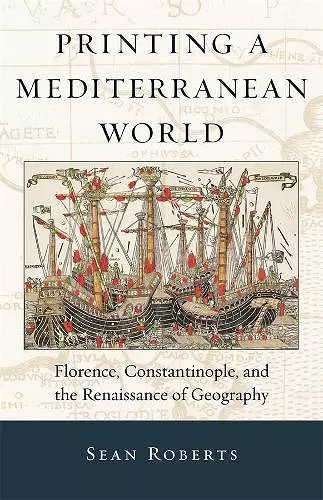Printing a Mediterranean World
Florence, Constantinople, and the Renaissance of Geography
Format:Hardback
Publisher:Harvard University Press
Published:28th Mar '13
Currently unavailable, and unfortunately no date known when it will be back

Through Berlinghieri's The Seven Days of Geography (1482), Roberts provides a highly original focus on the book as material artifact and contests prevailing views of its place in the history of geography and cartography. Most compellingly, his account of the book as a cultural go-between leads to a critique of models of Italian-Ottoman exchange current in early modern studies over the past decade. -- Stephen Campbell, John Hopkins University Through his meticulous study of Francesco Berlinghieri's Geographia, Roberts deftly touches on some of the most timely and topical areas of recent research in the field of early modern studies: Artistic agency, materiality, patronage, print culture-and the nature of 'the Renaissance' itself. -- Giancarlo Casale, University of Minnesota
In 1482 Francesco Berlinghieri produced the Geographia, a book of over 100 folio leaves describing the world in Italian verse interleaved with lavishly engraved maps. Roberts demonstrates that the Geographia represents the moment of transition between printing and manuscript culture, while forming a critical base for the rise of modern cartography.
In 1482, the Florentine humanist and statesman Francesco Berlinghieri produced the Geographia, a book of over one hundred folio leaves describing the world in Italian verse, inspired by the ancient Greek geography of Ptolemy. The poem, divided into seven books (one for each day of the week the author “travels” the known world), is interleaved with lavishly engraved maps to accompany readers on this journey.
Sean Roberts demonstrates that the Geographia represents the moment of transition between printing and manuscript culture, while forming a critical base for the rise of modern cartography. Simultaneously, the use of the Geographia as a diplomatic gift from Florence to the Ottoman Empire tells another story. This exchange expands our understanding of Mediterranean politics, European perceptions of the Ottomans, and Ottoman interest in mapping and print. The envoy to the Sultan represented the aspirations of the Florentine state, which chose not to bestow some other highly valued good, such as the city’s renowned textiles, but instead the best example of what Florentine visual, material, and intellectual culture had to offer.
Through Berlinghieri's The Seven Days of Geography (1482), Roberts provides a highly original focus on the book as material artifact and contests prevailing views of its place in the history of geography and cartography. Most compellingly, his account of the book as a cultural go-between leads to a critique of models of Italian–Ottoman exchange current in early modern studies over the past decade. -- Stephen Campbell, John Hopkins University
Through his meticulous study of Francesco Berlinghieri's Geographia, Roberts deftly touches on some of the most timely and topical areas of recent research in the field of early modern studies: Artistic agency, materiality, patronage, print culture—and the nature of 'the Renaissance' itself. -- Giancarlo Casale, University of Minnesota
Roberts’s account of Berlinghieri’s intellectual biography is informed and rewarding. It uncovers the distinctive quality of fifteenth-century geography, and reveals the characteristic combination of classical geography, mythology, medieval history and legend found in The Seven Days of Geography. His discussion of the Renaissance reinvention of Ptolemaic mapping reflects his awareness of the recent paradigm shift in the history of cartography and of science. The old progressivist vision of history and universal concept of objectivity has no place in Sean Roberts’s exposition. This book has a good chance of becoming a classic on the subject. -- Alessandro Scafi * Times Literary Supplement *
- Nominated for Phyllis Goodhart Gordan Book Prize 2014
- Nominated for Roland H. Bainton Book Prize 2014 (United States)
- Nominated for Herbert Baxter Adams Prize 2014
- Nominated for Helen and Howard R. Marraro Prize 2014
- Nominated for George A. and Jean S. DeLong Book History Prize 2014
ISBN: 9780674066489
Dimensions: 235mm x 156mm x 28mm
Weight: 635g
336 pages